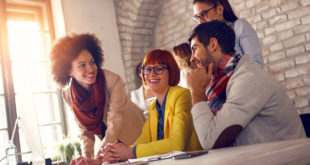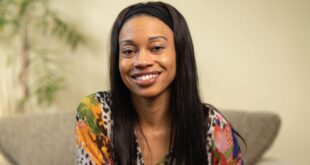We recently interviewed James Becraft, a health educator, photographer, and artist from Central California’s coast. He is a fascinating person to talk with.
Editor—Jim, like so many others, you and I became friends online on Facebook. Right away, I was drawn to you because of your artsy appearance and interest in drawing and photography. Before we talk about that, tell us a little about yourself. Where did you grow up, and how did you spend those years?
Becraft—I was born in Loma Linda, California, then grew up in Redding. I was educated in Adventist schools—third grade through University, including a graduate degree at Loma Linda’s School of Public Health in Loma Linda. Along the way, I attended community colleges, Portland State, and the University of Grinding Off the Edges. I remain a work in progress.
Editor—That pretty much covers your formal education. It all looks good, but let’s talk about that last one—the University of Grinding Off the Edges. Ha! You should have known I would want you to elaborate on that. I’m guessing it is affiliated with the University of Hard Knocks, of which I am an alumnus. Can you give me an example of something you learned there?
Becraft—Formal education is simply a beginning. Life’s daily events and priorities lead me along and have for 50 years. Each day I make a priority list, comparing what I need to do immediately with what’s on the horizon. This helps me stay focused on where I’d like to go. However, life has too many twists for me to think too many years out. At least that’s been my experience.
Editor—In the mix, you started journaling and drawing somewhere along the way. What inspired you to do that?
Becraft—Here are some snapshots of my journey. I earned much of my way through church school. I worked in the Shasta County library from eighth grade through 10th-grade plus.
At age 18, during my first year at Walla Walla College, I tried to pay my way through college, selling stuff door-to-door and doing very well around College Place. I needed a vehicle. My grandfather sold his red 1951 Chevrolet pickup to me for $500. Leaving Coulterville, California, I drove to Redding, where my parents lived. I went to sleep driving and woke up two to three days later in Mercy hospital. The nurse gave me three pills. I took them. She went away. She came back and asked about the pills. I said, “What pills?” And smiled.
She about fainted. They figured I’d survive after that. Seems like I have. Brain damage and all.
At Auburn Academy, I took classes with Brenda Barnhart, also in the class of 1967. She creamed us. She’s now a retired pediatrician in Minnesota.
I learned that I might be fairly intelligent, but then I met my beloved Susan [now my wife]. We’re usually not as smart as we sometimes think.
I monitored a floor of rambunctious fellow students. They knew how to put you in your place and make you understand the limitations of “power.”
Student Missionary in Ethiopia
I went to Ethiopia as a student missionary, where I was involved in a trauma situation, and where I saw a tractor coming down on top of me. I moved [got out of the way]. Several folks were injured, and one died—people I had not wanted to be on the tractor. Reflecting on this, I should not have been allowed to drive a tractor at 18 in a far distant country. That’s a long and heartfelt story.
Lebanon on Cusp of Civil War
The General Conference of Seventh-day Adventist Secretariat called me right after I had started a new job at the Riverside County Department of Public Health in Riverside, California. They immediately invited Susan and me to Bahrain as “health missionaries.” I told them I had just started a job but would PRAY about it. We did. We went. At the height of the oil crisis, we had a funny send-off with oil barrels that we sat on like camels—asserting the stereotypical behavior of the “East.” (I recommend reading the book Orientalism by Edward Said).
It took six months to be put on a plane for our new assignment. In the meantime, I worked as a sexually-transmitted disease health educator for Riverside County. I remember speaking about gonorrhea to 125 Catholic school girls and going out with CDC case investigators to study syphilis as part of my orientation. I’m still laughing about that six months. I went on television in Palm Springs and was told I could say “vagina” but not “penis”—or was it the other way?
We arrived in Beirut, Lebanon, to find the project in Bahrain had been killed due to the insistence of it requiring some language skills in the application to go to the Bahreini government. For nine months, we studied Arabic and got very sick, and then the Lebanese Civil War came. We bailed.
That experience gave me a deep appreciation for the sometimes unenlightenment of church bureaucracy (despite the prayers and preaching) and a love for the Arab World and Islamic civilization, which extended to Hebrew civilization, medieval Spain, and the global community in general. My view: We’re all God’s children. We all can live in grace, look at the universe in its vastness, and recognize we don’t have all the answers about grace, justice…or God.
Jesus, citing the Torah of Moses, got it right: Love God and your neighbor. Mohammed also got it right: Submit to God, and He will put you on the right path. The lesson for us all is to work together with God.
In my view, Adventists get it right when they pick up on the theme of seeing the Ancient of Days sitting on the thrown, the example of Jesus living the Torah, that our message is of Salvation and healing, and of bringing people into oneness with their beings and in oneness with the Almighty. Ellen White, at her best, grew into this view.
When it comes to working with and for others, we best listen more, act more, and not try to tell people what to do.
Our Hebrew brothers and sisters speak of Tikkun. I like this:
The Hebrew phrase tikkun olam (pronounced tee-KOON oh-LUHM) means “world repair.” In modern Jewish circles, tikkun olam has become synonymous with the notion of social action and the pursuit of social justice (MyJewishLearning.com).
The School of Rough Edges
Our learning in life can be broken into two phases. (1) Those that typically occur in academic circles, and (2) those that are best labeled as informal or as coming from brute experience. I call the latter “The School of Rough Edges.” I spent plenty of time learning by experience, trial, and error.
After returning from the “debacle” in Lebanon, I worked for the San Bernardino County Department of Public Health. Even though Lebanon was difficult, I developed a deep appreciation for a man stymied by the system, Robert Darnell, PhD, an Adventist Missionary among Islamics and surrounding areas for 25 years.
Dr. Darnell finally left Lebanon deep into the war after being forced out. He came to Loma Linda, where I had landed. During nearly five years at Loma Linda, I worked with Carrol S. Small, Class of 1934, as executive editor of the ALUMNI JOURNAL, and studied anthropology and middle east studies with Dr. Darnell, John Elick, and an ethics class or two with Jack Provonsha. They taught in the Graduate School vis á vis the Schools of Medicine and Public Health or in tandem.
Those were delightful years, and from each experience, I had some of my rough edges and pretensions ground off. My view of the Advent community, locally and globally, and the work of those engaged in my heritage slowly evolved with time.
Have you ever heard of Ruth Temple, a black graduate of Loma Linda’s School of Medicine? She was a woman of great influence in the Los Angeles area. I interviewed her and many others who built LLU’s reputation in the first half of the 20th century.
Editor—This amazing journey should be published in a book. I’m fascinated with this because even though I asked you to tell us about your entry into drawing and the arts, you’re giving us a much broader view that reminds us of how complex life is. While artists may love to draw or paint, they have many other competing interests or callings that ultimately influence their art. Please tell us more.
Becraft—At heart, I believe the essence of Adventism is the “health” work, and by this, I mean, as I said earlier, that we are called to help individuals and communities become whole through humble acts that are just and merciful (Micah 6:8).
Also, I worked for Carl Bauer, Dick Hart, and other Loma Linda School of Medicine alumni in Loma Linda to get a little organization going called the Adventist International Medical Society (AIMS). I think that organization represented what is now known as Adventist Health International or something along those lines. Despite my hard-edged experiences with Adventist church systems, I believe our work is the “health work.”
In 1980 our son was born, and my wife wanted to live in Oregon. However, I had signed on the dotted line to accept a job with the School of Medicine to work on a local office of a statewide program to educate health professionals from under-served communities. This was with the Assistant Dean of the School of Medicine. But my wife taught me the importance of priorities and that my first “mission” is always my family. I’ve tried to keep this in mind—changing the world in some distant country must come second. So, we moved to the Pacific Northwest.
Stan B. Berry, a young hospital administrator and fellow LLUSPH graduate, hired me to work for Tillamook County General Hospital, now Tillamook Regional Medical Center. I spent five years working for that institution focused on community health. My wife went to work for the local county commissioners—which I understand gave them the first executive secretary the county had ever had with a college education.
The State of Oregon
Then, after a referral from a couple of friends, Paul Betlinski, MD, a Loma Linda School of Medicine graduate and medical examiner, health officer, etc., and an environmental health/health department pro with whom I collaborated to establish a health fair for the county (held every year for over 25 years). Sue Cameron and I went to the State of Oregon and worked for them for nearly 10 years with Lorraine Duncan in the state immunization program, and Carrol Allen in community services. I’ve been in every county and on every indian reservation in the state of Oregon. We provided technical assistance to county health departments. We reviewed their programs for compliance with assurances made to the U.S. Public Health Service, the Centers for Disease Control—-and the state.
Two key accomplishments:
I wrote the quarterly and annual reports submitted to CDC by the state. I specialized in writing about the novel and good things Oregon was doing as we dealt with measles outbreaks, etc., in the early 1990s. In addition, I helped create an action team to establish an AmeriCorps VISTA project in which volunteers were assigned to over 25 health departments to promote primary care, educate parents about immunizations, and promote nutrition services for mothers and children.
I could share many other things, but let me talk about art.
Blending Life With Art
Sketching, scribbling, and playing the clarinet commenced in those years, and I also took fiddle lessons to help me deal with the challenges. I play an instrument every day. Art, whether music or visual, or whatever, saves lives. It is a spiritual experience.
For most everyone on this planet, life has deep valleys and rocks that grind them down and cause them to be depressed. But the sun also shines, the rain comes, and Providence occurs because the God of time, space, and all firmaments care for us. I choose to believe this. Our brother, rabbi, Savior Jesus Cristo, and all the intricacies and fights over the Word are beside the point if we don’t show Agapé love for each other.
Editor—Somewhere along the way, you started journaling and drawing. What inspired you to do that?
Becraft— In 1987, my supervisor, Lorraine Duncan, had what she called “outlooks” that chronicled in documents and reports the history of the Oregon immunization program since she had joined the “cause” 20 years before.
I said, “That’s very smart.”
I will be traveling and meeting jillions of people in my work and be stuck attending lots of meetings. So, as I take notes, why not create drawings in my journals?
I decided to draw in my journals, along with taking notes. I reasoned if Thomas Jefferson and Julius Caesar took notes and left them behind, I can too. Simple me. They may land in a landfill, but my journals can help me see how I learn and change with a line, thought, word, and ambitions.
My grandfather left some notes, but not enough. I’d sure like to see some from my early Maryland, Kentucky, Indiana, Missouri, and California forebears. I’ve got a son and he might like them someday—and his kids, Levi and Elijah. I choose to draw and write. It does stuff to my brain, makes me feel good. Like the violin maker I met last week says about his passion, “If I’m not out here in my shop making violins for a week, I feel like something’s wrong.”
And so I started.
I must have 60-70 journals, 9 x 12 art books/journals, all with drawings and text on almost every page, usually sketches of people, and often anecdotes and notes from studies I’ve made. They are in homemade boxes I have made with J.R. Becraft burned into the sides with a pyrographic pen.
Back in Tillamook, I formally took art classes from Christine Harrison at Tillamook Bay Community College. To begin with, I also enrolled my Uncle Ron in the classes. He was an artist who came to live with us and be cared for. We took watercolor, printmaking, acrylics…etc. I enjoyed them all. Unfortunately, no figure drawing with nudes. Just joking!
Uncle Ron went into a care home. I just kept on taking art classes. I remember when he could no longer look at a reference and put pen to paper. Wow. We need to use minds while we have them. I hope I’m like my bad boy uncle at age 95, driving around Medford, Oregon, saying, “I’d love to be selling cars again.” His art was being a bad boy and selling, but when he died, his third family was around him.
When I go, there will be plenty of junk to get rid of, but I sure have had fun, and I have a great wife, two amazing little grandsons, and many nephews and nieces whom I love and respect. I hope my art shows it—-people sketched in ink on the fly, washed in watercolor, with each image depicting the amazing person I saw, often only fleetingly.
Over the years, I also took classes in French and Spanish, and continued my Arabic studies, so my journals are filled with language notes and text, reflecting my studies and travels.
A highlight of the 10 years or so I worked as a groundskeeper was attending the Hillsboro Hispanic Church.
We spoke earlier about the accoutrements I enjoy as tools or my art.
Main tools are my eyes, mind, hand, fountain pens, ink, and watercolors.
I also, however, am an enthusiast of fine photographs; you name the art, I appreciate it. I most like keeping things simple cause I’m pretty simple and take that ancient adage to heart once in a while, “Keep It Simple, Stupid.”
I produced a college catalog on 4 x 5 films that gained national recognition in the 1980s. I greatly appreciate large format photography and classic photojournalism.
Life With a View
My advice is to live by design and love by design.
Every person, every meeting in which you sketch, has precious people. We can all laugh with each other.
I’ve worked with many very serious, humorous, hilarious, kind, and amazing people. Take Fred Hoesly, MD, the epidemiologist—an Oregonian who came home to serve his state. If I worked in a striped shirt, he called me “Tiger.” When he spoke about statistics, he always used the word “sadistics.”
I try not to BE a statistic. I never was good at it from the time I arrived. I have had some sad moments, but hope springs eternal! Hope is Eternal. Take it easy….
Editor—Thank you, James. We are better people for having heard your story, and we trust that reading it will inspire us to be the unique people God calls us to be.
Check out James’ art and photography here.
Rich DuBose interviewed James Becraft in the summer of 2022.




